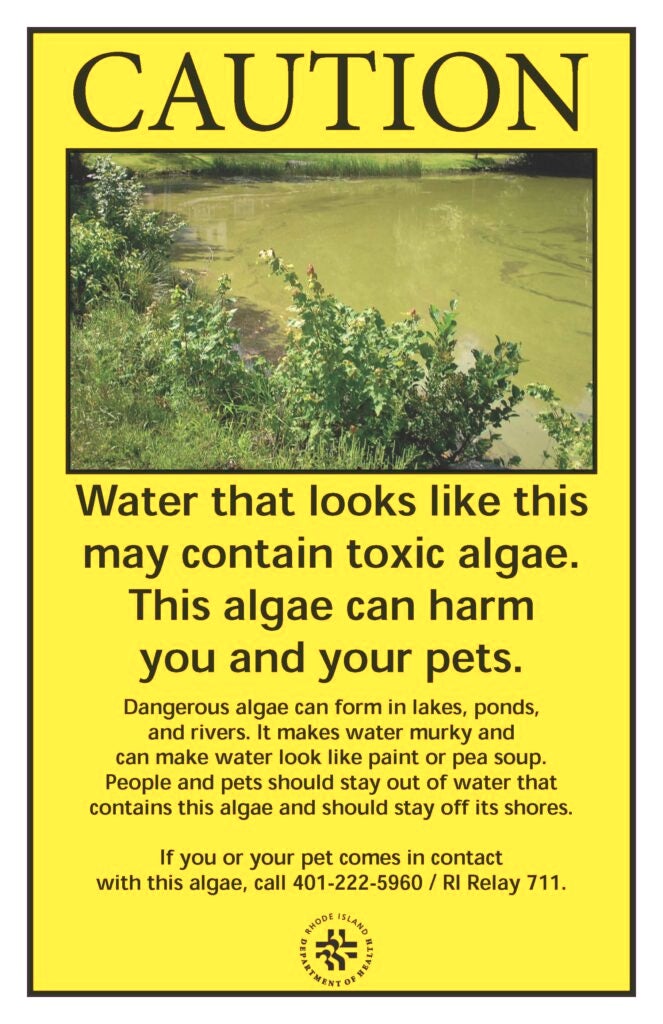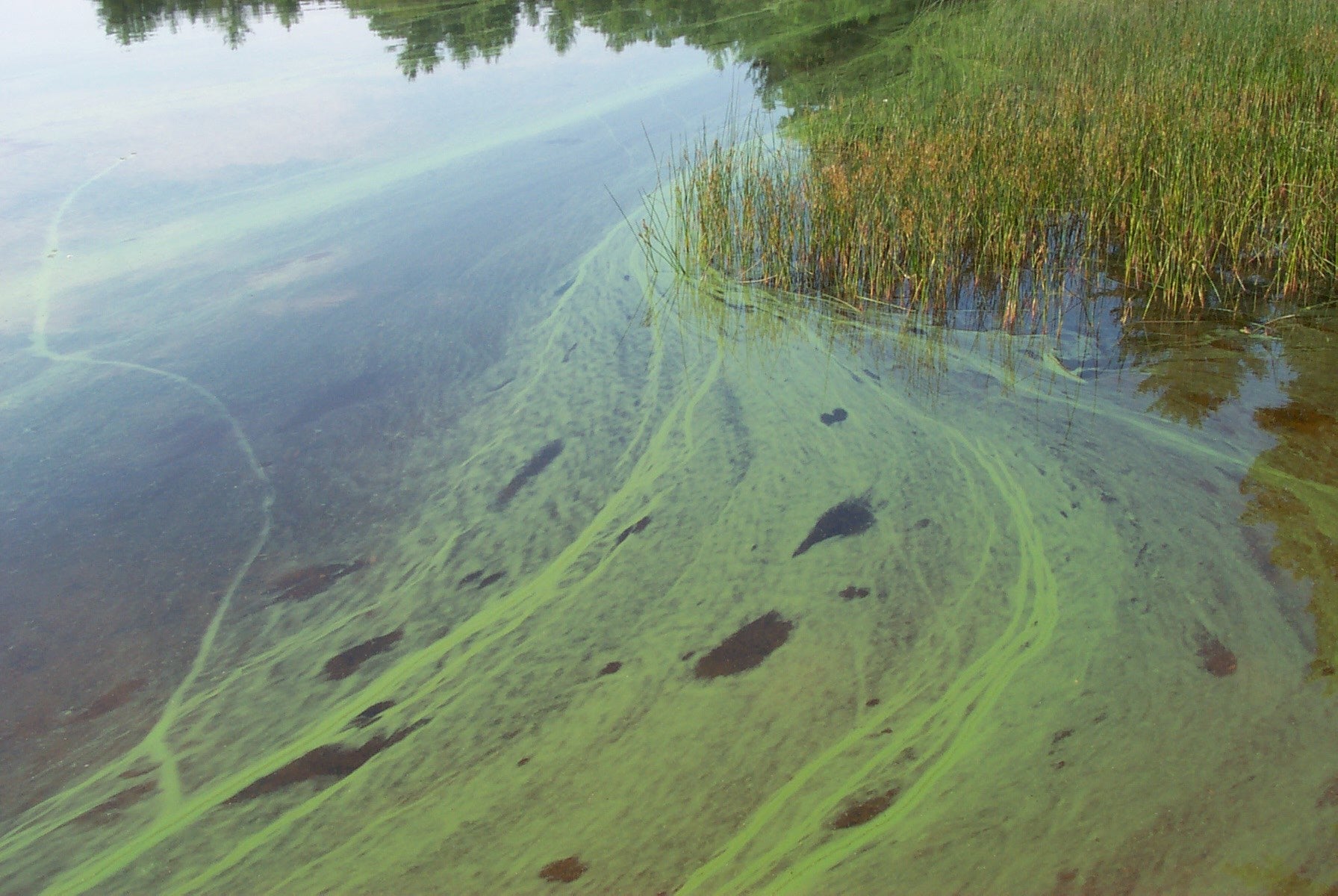KINGSTON, R.I. – July 14, 2022 – As the warm days of summer draw us outside, the public is reminded to take care when in contact with local freshwater waterways, as some contain toxic levels of cyanobacteria, which can carry a serious health risk for people and animals.
According to Elizabeth Herron of the University of Rhode Island’s Watershed Watch, it’s unclear if there are more harmful algal blooms in local ponds and lakes this summer or if people are simply more aware of them. If so, that’s all to the good. The potentially toxic algae (cyanobacteria) often reveals its presence in water with a noticeable bright-green spread – but not always.

As program coordinator for Watershed Watch, Herron oversees efforts to assess water quality and watershed conditions throughout the state, salt- and freshwater. Watershed Watch, the state’s largest volunteer water-quality monitoring effort, has volunteers monitoring more than 250 sites in Rhode Island and southern New England, from Barrington to Westerly.
Watershed Watch is part of a statewide network, partnering with the Department of Health and Department of Environmental Management, to monitor levels and threats.
“This kind of spike is typical in the summer,” Herron says. Spring’s warming weather drives the cyano blooms; the efficient bacteria love nothing better than a day in the warm water. Water bodies with regular blooms seem to be most active in late summer. Herron says that though toxic algae blooms seem to be increasing due to climate change, this summer’s levels are fairly consistent with what is typically seen in New England in the summer.
To stay safe, Herron advises people to follow local water conditions online and share their own observations to help state agencies track and monitor. bloomWatch is a phone-based app where citizens can report the blooms and help build scientific data. “Learning what to look for helps us build our base of knowledge,” she says.
While people may be aware of the risk to themselves or family members, pets are also at risk from the algal blooms. “People don’t think to call the state if their pets are sickened after swimming in a pond,” says Herron, “but that information is helpful to us.”
A dog owner herself, Herron knows how excited most dogs are to get into any body of water – but doing so may put them at grave risk. “We should be careful with pets near water bodies with high levels,” Herron says, noting that it’s easy to check conditions at local ponds and waterways by checking the DEM’s current advisory. Currently, a handful of sites with high levels of the contamination dot the state, from Almy Pond in Newport to the Turner Reservoir in East Providence. Most Rhode Island counties have one or two ponds or lakes currently under advisory.
“Climate change is increasing water temperature in ponds and standing bodies of water. The challenge is that some bodies of water can have algal blooms and not be toxic and some can look OK and be toxic,” she said. Heeding signs and advisories will go a long way toward keeping people and pets safe, along with joining efforts to minimize nitrogen and phosphorus entering waterways.
Scientists know the conditions that breed these dangerous blooms but not the exact reasons why only some ponds become toxic. So, the needed measures to prevent the blooms are unknown.
Current research may help lead to an answer. Some URI engineering professors are studying algae blooms in local waters using drones and underwater robotics. Professor Paolo Stegagno is collaborating with other engineering professors and scientists from URI and other colleges to develop and deploy high-tech tools to understand where, when and how these cyanobacterial blooms form. The project is funded by a $3 million multi-year grant from the National Science Foundation.

